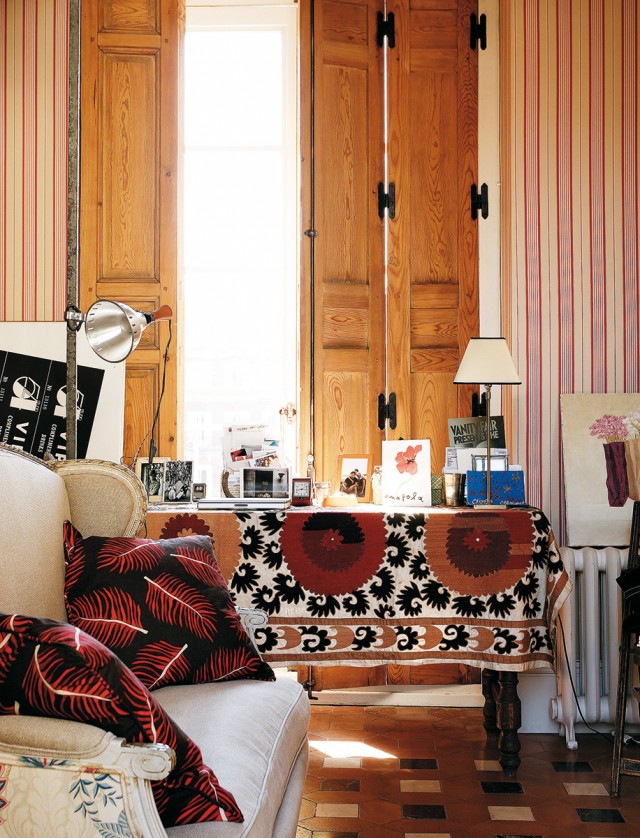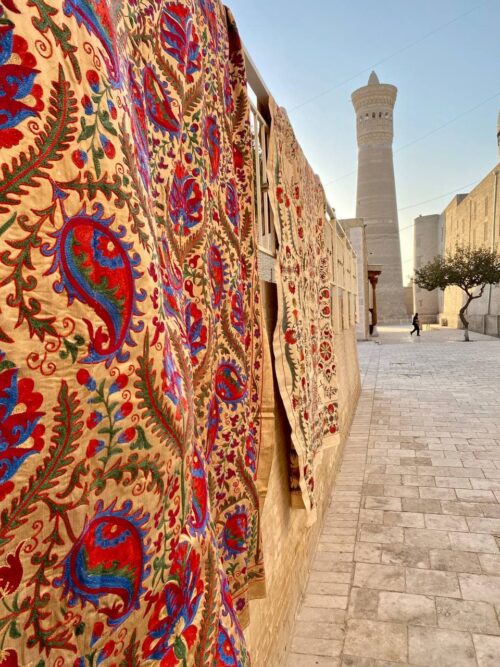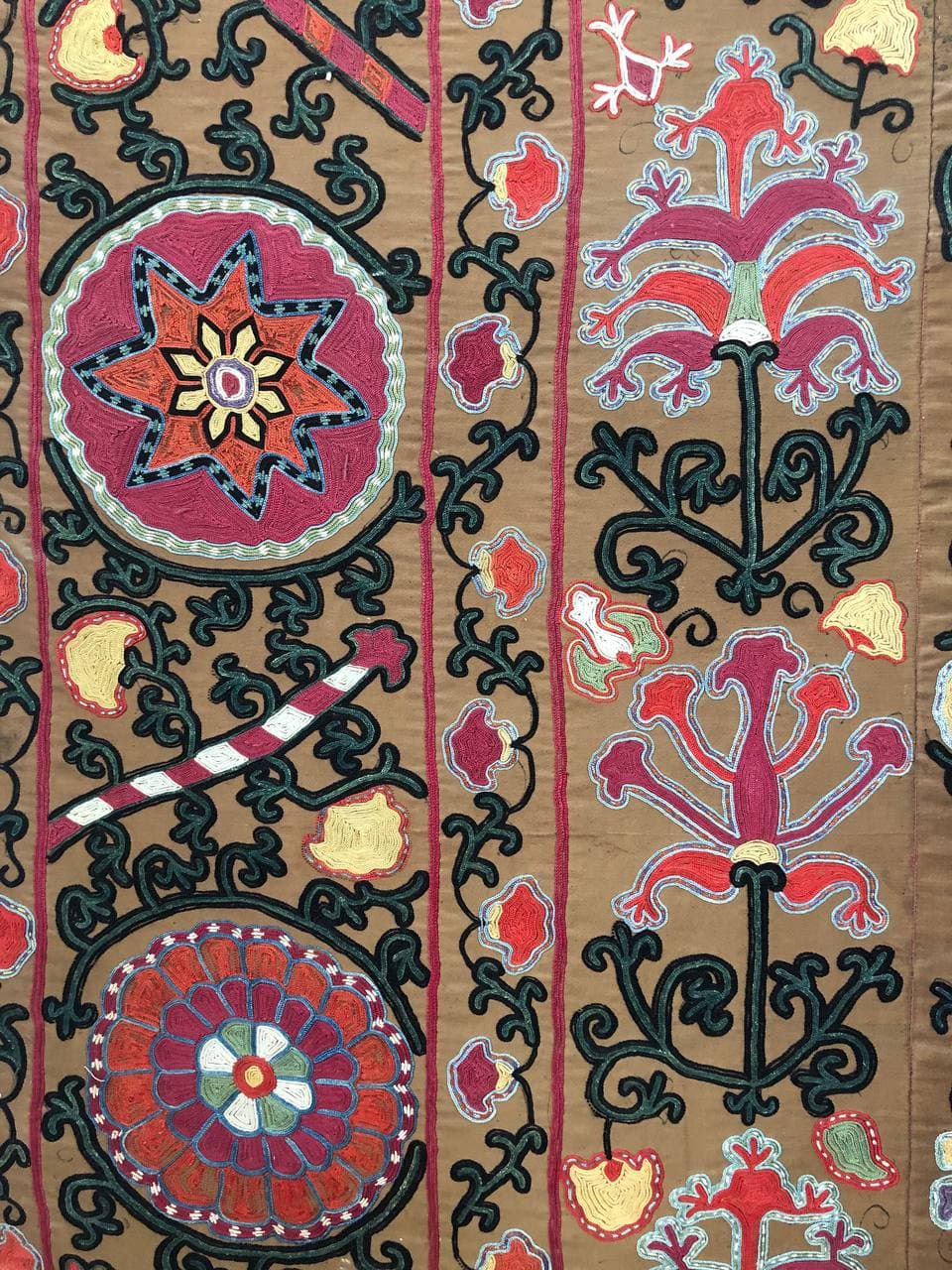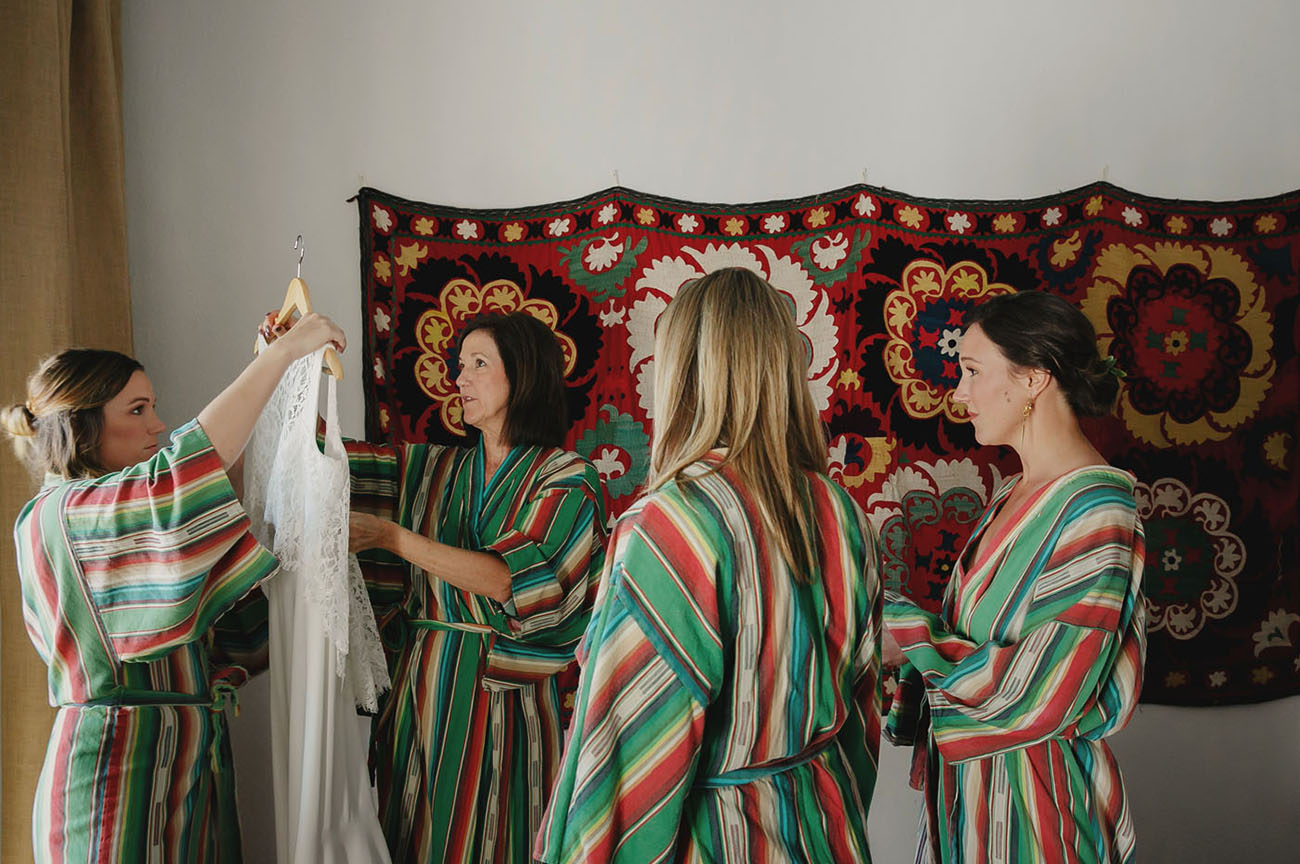
Suzani embroidery: history and present days
I’m reading an amazing book “Silk and cotton: Textiles from the Central Asia that was“ by Susan Meller. My main interest in this book was ikat fabric patterns and antique Ikat ropes. However, the book covers so many areas of Central Asian textiles! There is a whole chapter in the book about Central Asian suzani embroidery.
UzbekAlive’s main focus is on ikats but I still wanted to write a short blog post about suzanis to give you some history behind these beautiful embroidered textiles. History creates a background behind a specific product. This way when you buy a little something with a history you end up acquiring knowledge and a piece of cultural heritage.
What is suzani?
- Suzani is an embroidered textile. A term “suzani” derives from a Farsi word “suzan” which translates as “a needle”.
- Pre-Soviet suzanies had no date specified. This is why estimating their age is just a matter of a good guess.
- Girls learned to sew and embroider starting from an early age. Suzanni‘s were embroideries done by girls with a help of female members of the family for their dowries.
- There was a sentimental value embedded in suzanis. Embroidered Suzani accompanied a girl to her married life and were pieces of her family surrounding her in her new home. Most extraordinary pieces were passed from one generation to the next. These days some of those pieces attract textile lovers in museums around the world.
Choosing a bride by her embroidery (well, partly)
Marriages were widely a matter of an arrangement, especially back in the days. When choosing a bride, a groom-to-be and his family could not see or talk to a girl directly. However, when they came to visit girls’ parents in hopes to arrange a marriage, they could see the girls’ work around the house. A suzani wall hanging here, a suzani tablecloth there, a suzani teapot cover on a table… By inspecting these embroideries, the coordination of colors and a precision of embroidery they could develop an idea about a girl, her taste, her spirit, her diligence and her personality.

Source: www.HonestlyWTF.com
Soviet industrialization of suzani embroidery
The Soviet era and industrialization that came with it put hand embroidery on hold. Soviet girls went to schools and universities to study. That left little time for embroidery, especially in big cities. The industrialization also gave rise to a machine embroidery. It was easier to make big embroidered suzani textiles on machine-woven large clothes using embroidery machines. These machine embroidered suzanies to these day serve as tableclothes, bedcovers or room dividers to create eclectic boho style interiors. We have a few machine embroidered textiles in our store at this link.



